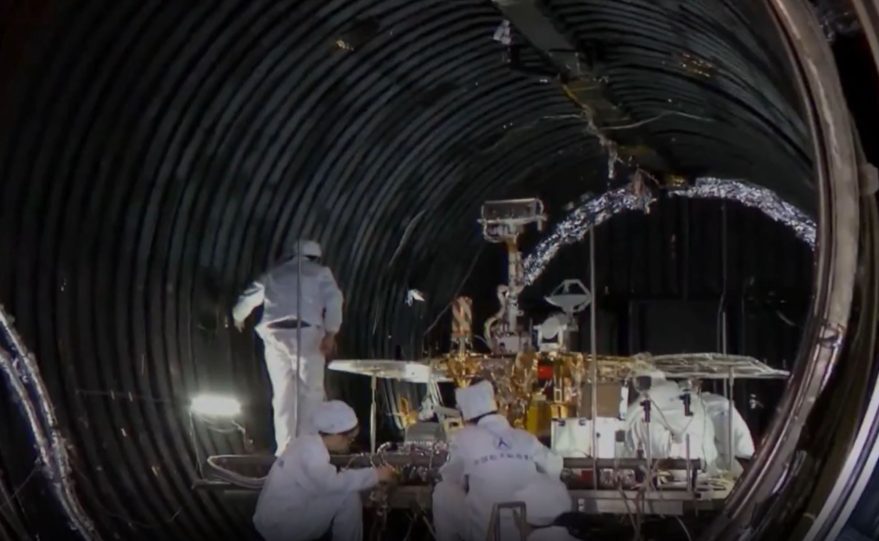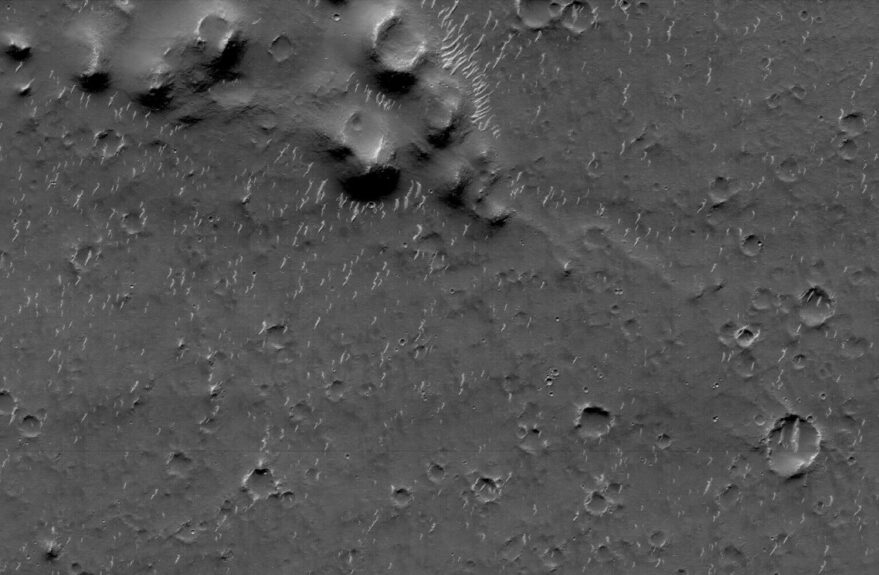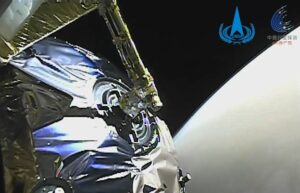The 240-kilogram Zhurong rover touched down on the dunes of southern Utopia Planitia just after 7:00 p.m. Eastern May 14 after three months of preparations in orbit and around 9 minutes after entry into the Martian atmosphere.
The critical entry, descent and landing sequences were carried out successfully, with a final hazard avoidance hover phase allowing selection of a safe final landing spot.
Teams back on Earth will now prepare the rover, named after an ancient fire god, to complete a panoramic image of the landing area, perform systems checks and then descend from its landing platform and onto the Martian soil.
The rover will then begin an initial 90-day mission to explore and analyze the local area, climate, magnetic field and subsurface.
The achievement marks complete success for China’s Tianwen-1 mission, the country’s first independent interplanetary expedition which launched in July 2020 and entered Mars orbit Feb. 10.
China had previously landed on the near and far sides of the moon, in 2013 and 2019 respectively, before completing a complex lunar sample return late last year.
Zhurong is equipped with six science payloads, including a laser-induced breakdown spectroscopy instrument for analysing surface elements and minerals, panoramic and multispectral imagers, a climate station, magnetometer and a ground-penetrating radar.
It aims to return data on potential water-ice deposits, weather, topography and geology, complementing science carried out by missions from other space agencies.

After months of collecting high-resolution imagery to map its landing area, Zhurong targeted an area inside Utopia Planitia, understood to center on coordinates of 110.318 degrees east longitude and 24.748 degrees north latitude.
Planetary scientist Long Xiao with the China University of Geosciences told SpaceNews in February that “the most unique aim is to search and map the distribution of water ice on the surface and subsurface,” using sounding radars operating on both the rover and Tianwen-1 orbiter. The latter will conduct a global survey with a focus on polar and high latitude regions.
The presence of water ice at the low latitudes of Utopia Planitia could have implications for understandings of potential past or present habitability and was as future crewed Mars missions.

Zhurong’s climate station will also be valuable for future plans, says Maria Hieta, a space engineer at the Finnish Meteorological Institute, adding to data coming from other instruments carried by NASA’s Curiosity and Perseverance rovers and the InSight lander.
“Combining the measurements of all the weather stations will help us to better understand the Martian climate and will undoubtedly bring new information, and will also help us prepare for future human exploration,” Hieta says.
NASA’s InSight lander was also listening for signs of the landing attempt through the atmosphere and on the ground. “This is only the second time we’ve been able to try something like this, so it’s incredibly exciting,” InSight team member Benjamin Fernando told SpaceNews. “If we do manage to hear Zhurong landing, we’ll be able to use it to calibrate the measurements we’ve made of other marsquakes.”
Tianwen-1 launched from Wenchang, south China, July 23, 2020 on a Long March 5 heavy-lift rocket, combining an orbiter and rover into one launch.
The mission built on technologies and capabilities developed through the Chang’e lunar program orbiters, lander and rovers, as well as head shielding and parachute expertise from Shenzhou human spaceflight endeavors.
The European Space Agency provided China with ground support for the Launch and Early Orbit phase and later during Earth-Mars transfer phases. ESA Mars Express HRSC (High Resolution Stereo Camera) and imaging spectrometer OMEGA also provided data and expertise to support characterization and selection of the Tianwen-1 landing sites.
China’s next Mars mission is expected to be a sample return attempt for around 2028-30.




